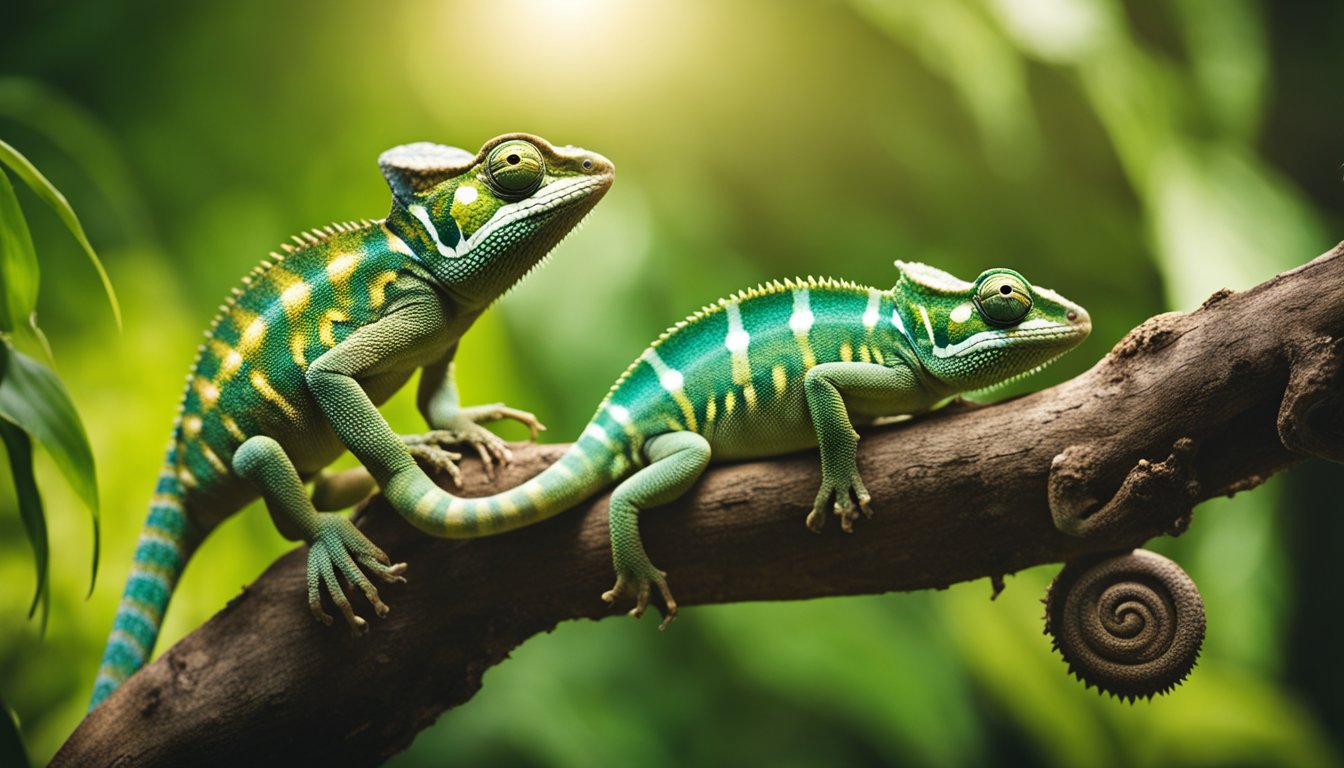Chameleons are extraordinary creatures, famous for their incredible ability to change colors.
This isn’t just for a dazzling display; it serves several important purposes.
They might morph their hues for camouflage, to communicate with other chameleons, or to regulate their body temperature.
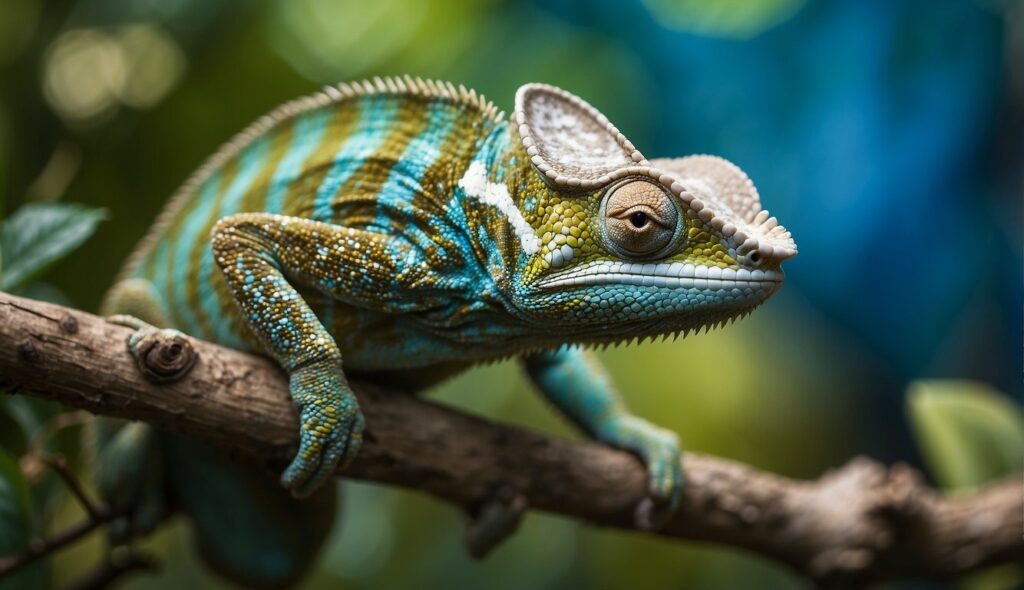
So how do chameleons perform this awesome trick? It turns out, these cool reptiles have unique layers of specialized cells in their skin.
These cells alter the way light reflects off the chameleon’s body, which causes the color change we see.
It’s like having a living mood ring that shifts colors not just to blend in with the leaves, but also to say “back off!” to a rival or “hello there!” to a potential mate.
Did you know that chameleons don’t change color at random?
They are very selective and can become different shades of green, brown, blue, yellow, red, or even black.
Each change can be a signal about how the chameleon feels or what it needs.
Diving into the world of chameleons is like uncovering a secret language of colors.
Stick around, and let’s explore five fascinating color-changing tricks of these amazing reptiles.
The Science of Chameleon Color Change
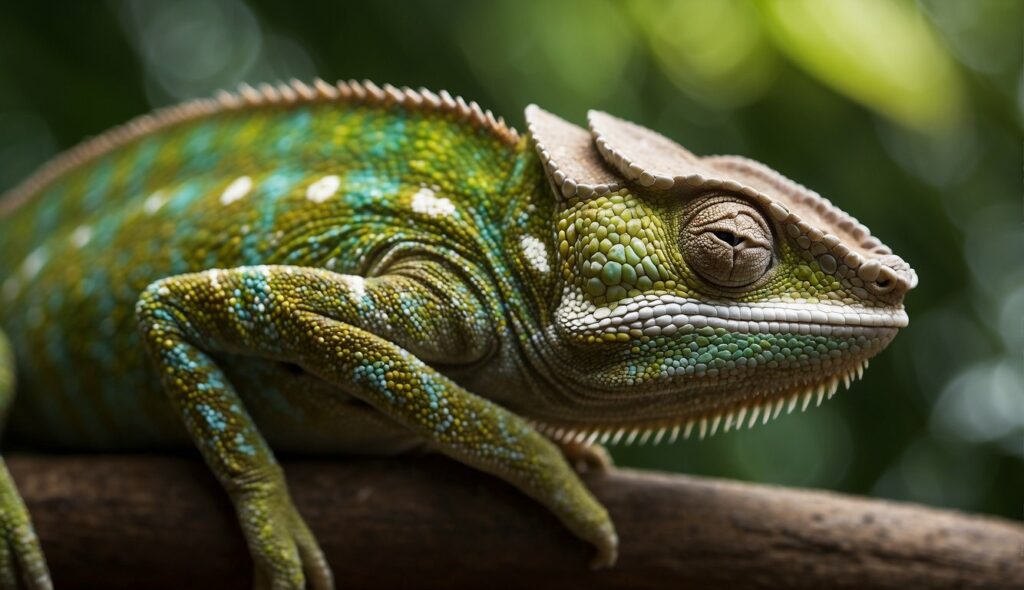
Chameleons are remarkable for their unique ability to change colors, a talent that both fascinates and delights.
This color transformation isn’t just for show; it plays a crucial role in their survival.
Why Chameleons Change Color
One may think that chameleons change their color to blend into their surroundings, but it’s often more about communicating than camouflage.
They signal their mood, intention to other chameleons, and body temperature through color variations.
For example, darker colors mean a chameleon is trying to warm up, while lighter colors reflect a desire to cool down.
How Chameleons Change Color
So how do these little creatures alter their appearance so dramatically?
It’s all thanks to specialized cells in their skin called chromatophores.
The top layers, known as xanthophores and erythrophores, contain yellow and red pigments, respectively.
Beneath those are cells called iridophores with guanine crystals that reflect light differently, resulting in blues and ultraviolets when the chameleon is excited.
Deeper still are melanophores, which contain the dark brown pigment melanin.
By expanding or contracting these cells, chameleons can shuffle their pigments like a deck of cards, changing the color that reflects through their transparent outer skin.
What Triggers a Color Change?
But what makes a chameleon decide to switch from a deep green to a vibrant red?
Environmental factors such as light, temperature, and even the presence of other chameleons can trigger a change.
Chameleons will often show brighter colors when displaying aggression or attempting to attract a mate.
Conversely, subtle shifts might suggest stress or a desire to retreat from potential confrontations.
These creatures are sensitive to their environments, both socially and physically, and their colors are their way of responding to the endless variety of challenges they face in the wild.
Chameleon Species and Their Unique Patterns
Chameleons are a fascinating bunch, boasting a wardrobe of colors and patterns that are as varied as they are vibrant.
But did you know that each species has its own signature style?
Let’s zoom in on some of the most colorful characters in the chameleon world and discover their unique fashion sense!
Panther Chameleon
The Panther Chameleon is a true artist of disguise, hailing from the lush jungles of Madagascar.
Males of this species wear a dazzling array of colors that can shift dramatically.
Depending on their mood, environment, or even the temperature, they can flaunt hues from bright blues and reds to sunny yellows and greens.
Veiled Chameleon
Next up is the Veiled Chameleon, known for the large, cone-shaped casque gracing the top of its head.
Originating from the Arabian Peninsula, this chameleon prefers to keep its fashion understated, with a base coat of green that can be accentuated with bands of yellow, brown, or blue when it’s time to impress.
It’s like wearing a simple green dress or shirt and then jazzing it up with some colorful accessories!
Jackson’s Chameleon
Have you ever seen a chameleon with three horns? Jackson’s Chameleon is the triceratops of the chameleon family.
These little guys are native to East Africa and usually come dressed in a suit of leafy green.
Their hue might not change as dramatically as the other chameleons, but they can definitely throw in some darker shades and spots when they want to mix things up.
Imagine wearing a green cape every day, but some days you sprinkle it with shades of dark green dots and patches – quite the subtle statement!
Chameleons in Their Natural Habitat
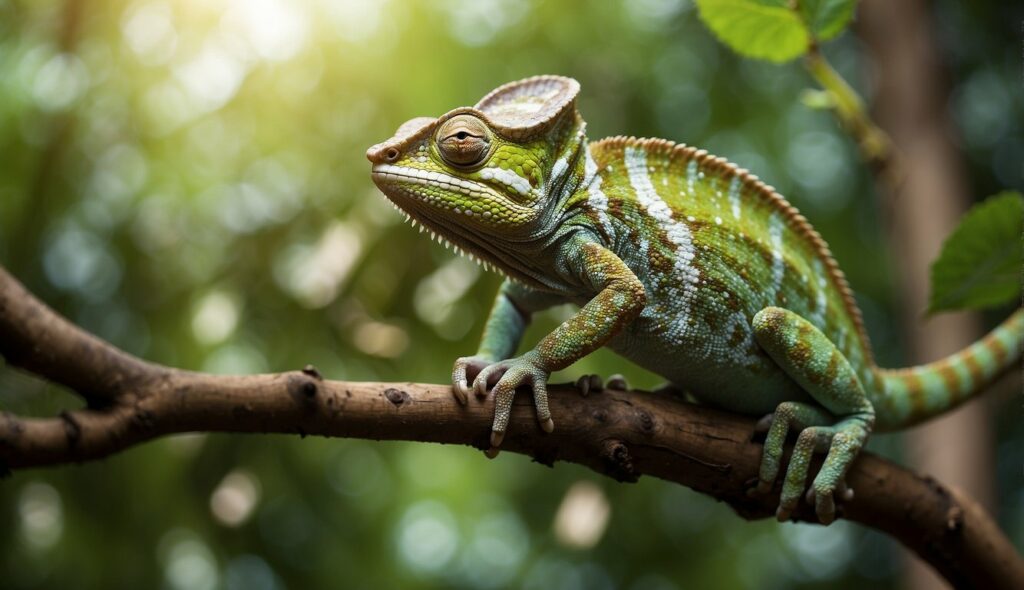
Chameleons are remarkable reptiles renowned for their ability to change colors, a feature that is essential to their survival in the wild.
They use their color-changing skin to communicate, hide from predators, and even to regulate their body temperature in the diverse habitats they call home.
Hiding From Predators
Chameleons have mastered the art of camouflage.
Their skin changes colors and patterns to match their environment, making them nearly invisible to both predators and prey.
The chameleon’s ability to blend in with leaves, branches, and even flowers is so effective that they can be right before your eyes, yet remain unseen.
This natural cloaking ability is their first line of defense in a world full of dangers.
Communicating Through Colors
Unlike us, chameleons chat with colors. They express their moods, intentions, and assert dominance by changing their hues.
For instance, a chameleon might turn bright colors to show excitement or aggression, while darker shades might mean it’s feeling stressed or submissive.
Observing these color conversations can be quite the spectacle, as they flash their body language for all to see.
Regulating Body Temperature
Chameleons are ectotherms, which means they depend on their surroundings to manage their body temperature.
They darken their skin to absorb heat and warm up, or lighten it to reflect the sun and cool down.
On a chilly morning, you might see them basking in the sun with a dark outfit, while on a hot day, they might sport a lighter shade to keep cool.
This temperature control is crucial for their survival, as it helps them stay active and healthy in their habitats.
Frequently Asked Questions About Chameleons
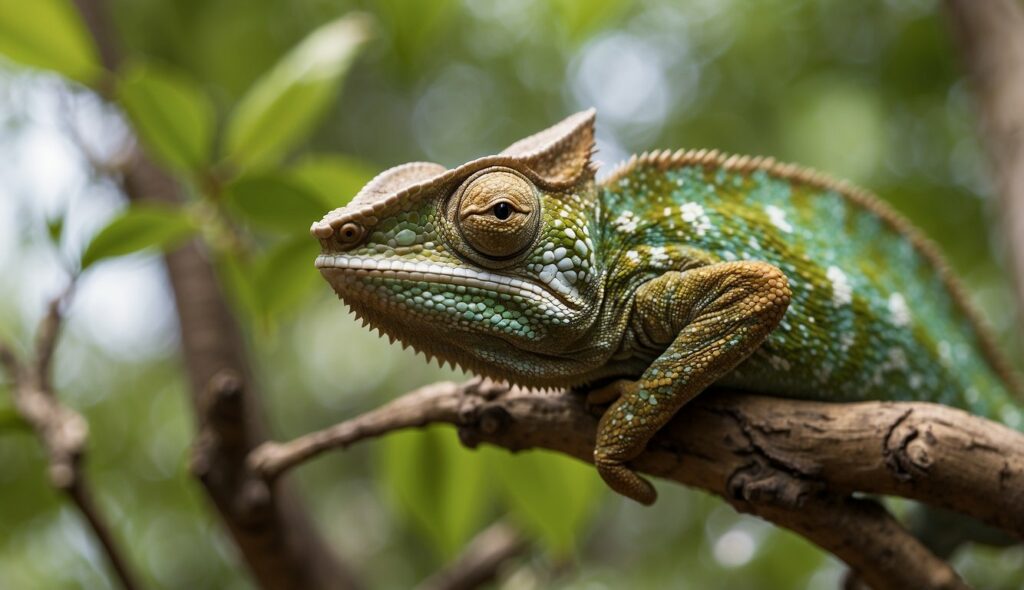
Explore the amazing color-changing tricks of chameleons with fun and fascinating facts that will captivate both kids and adults alike!
How do chameleons change their colors to blend into their surroundings?
Chameleons are remarkable creatures that can adjust their skin hues to match their environment.
This clever camouflage is achieved through specialized cells in their skin called chromatophores.
These cells contain different pigments, and when chameleons want to change color, they expand or contract these cells to mix the pigments like an artist mixing paint on a palette.
Can you explain the reason chameleons have such a wide range of colors?
The diverse palette of a chameleon isn’t just for show; it’s a complex combination of biology and physics.
These reptiles have several layers of chromatophores, each with unique pigments ranging from reflective iridescents to deep browns.
This layering enables them to create an astonishing variety of colors, which can serve as communication or a response to temperature and light.
What are some outstanding facts about chameleons and their vision?
Chameleons possess some of the most extraordinary eyesight in the animal kingdom.
Their bulbous, independently rotating eyes give them a nearly 360-degree field of vision.
Amazingly, they can zoom in on tiny insects from a distance and can even see ultraviolet light, helping them to locate mates and understand their surroundings better.
Could you share how chameleons’ color-changing abilities help them in their natural habitat?
In the wild, a chameleon’s ability to alter its coloration is vital for survival.
By mimicking the greens and browns of leaves and branches, they can stealthily avoid predators or sneak up on their prey.
This natural invisibility cloak helps them to stay safe and successful as hunters in a world full of dangers.
In what ways do chameleons’ color changes communicate their moods or feelings?
Imagine if people could change color with their feelings—chameleons actually do this!
When they experience stress, they may turn darker shades, while a male chameleon might flaunt vivid colors to impress a potential mate.
Observing these shifts can tell us a lot about what’s going on in their reptilian minds.
What are some intriguing ways chameleons use their color-changing skills for survival?
Beyond blending in, chameleons use their color transformation for social signaling and regulating their body temperature.
Darker colors can absorb more heat, so a chameleon might darken on a cool day to warm up!
Similarly, during a confrontation, they might flash bright, intimidating patterns to scare off rivals or predators.

